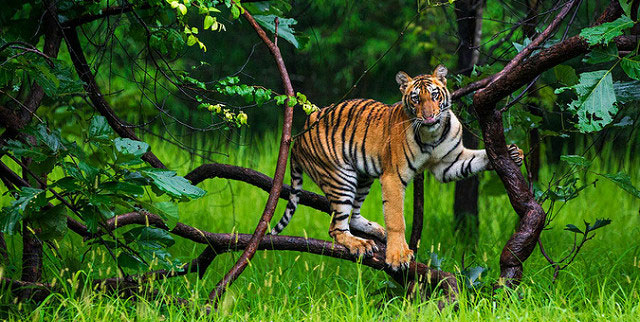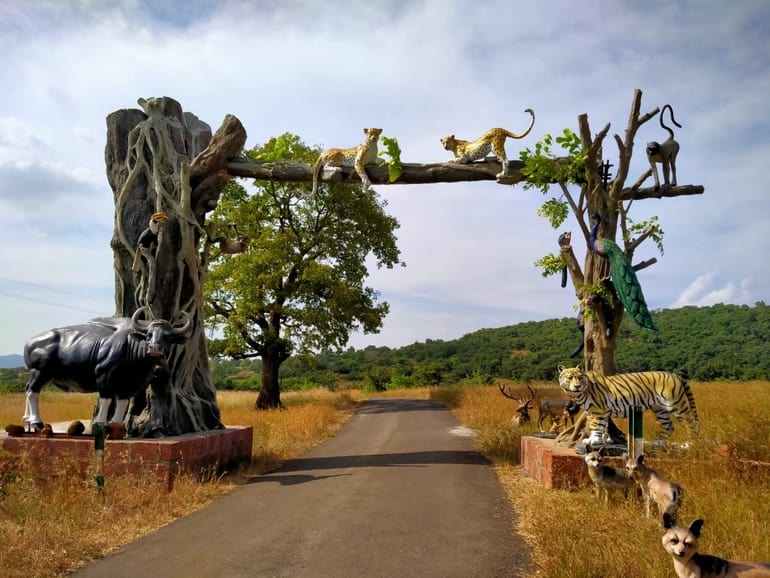Forest
Tadoba Forest
Tadoba Andhari Tiger Reserve is one of the prominent wildlife sanctuaries and tiger reserves in the state of Maharashtra, India. Here are some key details about Tadoba Andhari Tiger Reserve:
Location:
Tadoba Andhari Tiger Reserve is located in the Chandrapur district of Maharashtra in the central part of India.
Establishment:
Established in 1955 as a wildlife sanctuary, Tadoba became a Project Tiger Reserve in 1993, under the Project Tiger initiative to protect and conserve the endangered Bengal tiger.
Area:
The total area of Tadoba Andhari Tiger Reserve is approximately 1,727 square kilometers, making it one of the largest and oldest national parks in Maharashtra.
Flora and Fauna:
Tadoba is known for its rich biodiversity, including a variety of flora and fauna. The reserve is characterized by Southern Tropical Dry Deciduous Forests, and it is home to a diverse range of plant species. The fauna includes Bengal tigers, leopards, Indian wild dogs (dholes), sloth bears, Indian bison (gaur), and various species of deer, among others.
Tigers:
Tadoba Andhari Tiger Reserve is particularly famous for its tiger population. The park has been successful in the conservation of tigers, and sightings of these majestic big cats are relatively common.
Birdlife:
The reserve is also a haven for birdwatchers, with over 195 species of birds recorded. Commonly spotted birds include Indian pittas, crested serpent eagles, and the endangered species such as the grey-headed fish eagle.
Tourism:
Tadoba is a popular destination for wildlife enthusiasts and tourists interested in safari experiences. The park offers safari options, both by jeep and on elephant back, allowing visitors to explore the diverse habitats and spot wildlife.
Core and Buffer Zones:
The reserve is divided into the core zone, where tourism activities are regulated to minimize disturbance to the wildlife, and the buffer zone, which allows for sustainable development and community engagement.
Conservation Challenges:
Like many wildlife reserves, Tadoba faces challenges such as habitat fragmentation, human-wildlife conflict, and poaching. Conservation efforts are ongoing to address these challenges and ensure the long-term survival of the diverse ecosystems within the reserve.
Connectivity:
Tadoba Andhari Tiger Reserve is part of the larger Tadoba-Tiger Conservation Unit, which includes several protected areas and forms a crucial corridor for wildlife movement in the region.
Tadoba Andhari Tiger Reserve attracts nature lovers, photographers, and researchers, contributing to both conservation efforts and eco-tourism in the region. It remains an important stronghold for the conservation of Bengal tigers and other wildlife species in Maharashtra.
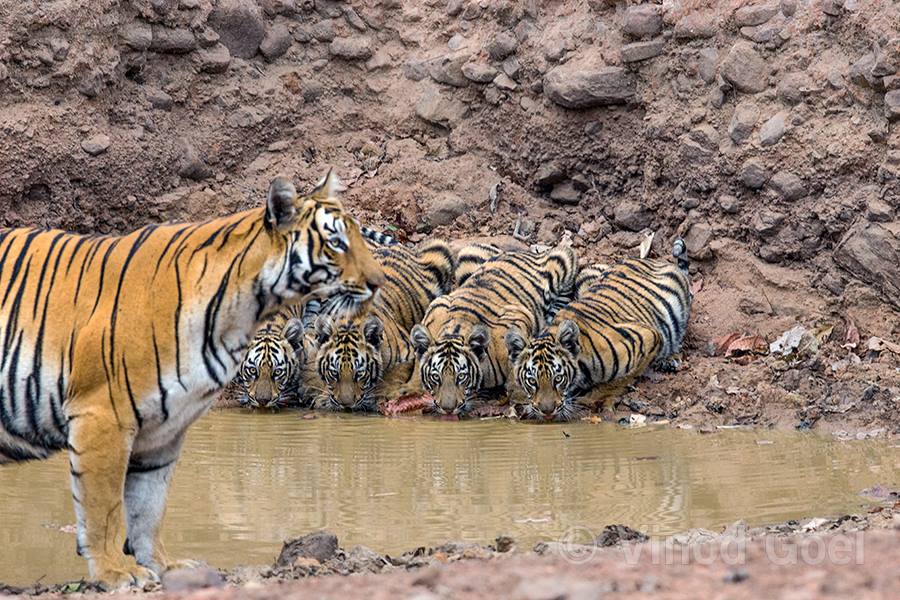
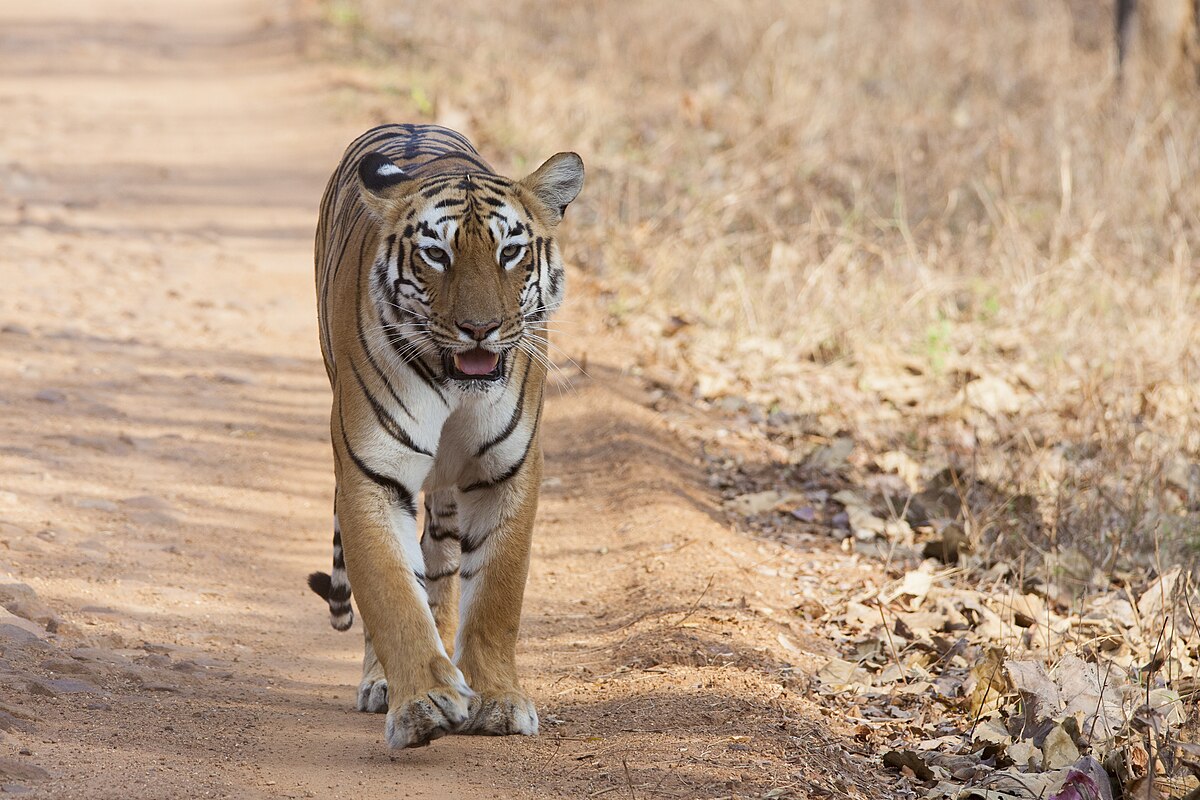
Bhimashankar Wildlife Sanctuary
Bhimashankar Wildlife Sanctuary is a protected area situated in the Western Ghats of Maharashtra, India. Here are some key details about Bhimashankar Wildlife Sanctuary:
Location:
Bhimashankar Wildlife Sanctuary is located in the Pune district of Maharashtra, within the Western Ghats range. It is situated at an elevation of approximately 3,250 feet (1,050 meters) above sea level.
Biodiversity:
The sanctuary is known for its rich biodiversity, featuring a variety of flora and fauna. The region is covered with tropical and subtropical moist broadleaf forests, and it is home to several species of plants, mammals, birds, reptiles, and insects.
Flora:
The sanctuary is characterized by dense forests with a variety of tree species, including valuable timber trees like teak, rosewood, and silver oak. The diverse flora contributes to the overall ecological health of the region.
Fauna:
Bhimashankar Wildlife Sanctuary is home to a range of wildlife species, including Indian giant squirrels, Indian flying foxes, sloth bears, leopards, and several species of deer. The sanctuary is also known for its birdlife, with various species of avifauna found in the area.
Bhimashankar Temple:
In addition to its ecological significance, the region is famous for the Bhimashankar Temple, one of the twelve Jyotirlingas (shrines) dedicated to Lord Shiva in Hindu mythology. The temple attracts pilgrims and tourists alike.
Sacred Grove:
The area around the Bhimashankar Temple is considered a sacred grove, contributing to the cultural and religious significance of the sanctuary. Sacred groves are often protected due to their association with religious practices.
Conservation Status:
Bhimashankar Wildlife Sanctuary is designated as a wildlife sanctuary to protect its diverse ecosystems. Conservation efforts are in place to safeguard the flora and fauna within the sanctuary.
Trekking and Eco-tourism:
The sanctuary offers opportunities for trekking and eco-tourism. Visitors can explore the natural beauty of the Western Ghats, witness the diverse wildlife, and enjoy the serene surroundings.
Threats and Conservation Challenges:
Like many wildlife sanctuaries, Bhimashankar faces threats such as habitat loss, encroachment, and human-wildlife conflict. Conservation efforts aim to mitigate these challenges and preserve the sanctuary’s ecological integrity.
Connectivity:
Bhimashankar Wildlife Sanctuary is part of the Western Ghats, a UNESCO World Heritage Site, and it contributes to the conservation of the unique biodiversity in this globally significant region.
Bhimashankar Wildlife Sanctuary is an important area for both conservation and cultural heritage, attracting a mix of nature enthusiasts, pilgrims, and researchers interested in the diverse ecosystems of the Western Ghats.


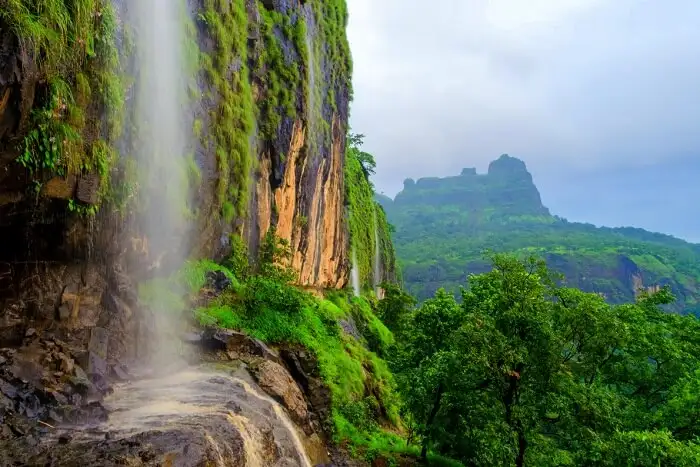

Radhanagari Wildlife Sanctuary
Radhanagari Wildlife Sanctuary is situated in the Kolhapur district of Maharashtra, India. Here are key details about Radhanagari Wildlife Sanctuary:
Location:
Radhanagari Wildlife Sanctuary is located in the southern part of Maharashtra, near the city of Kolhapur. It is part of the Western Ghats, a UNESCO World Heritage Site.
Establishment:
The sanctuary was established in 1958 and covers an area of approximately 351.16 square kilometers. It was initially created to protect the Indian bison (gaur), and it has since become a significant area for biodiversity conservation.
Flora:
The sanctuary is characterized by dense evergreen and semi-evergreen forests. The flora includes valuable tree species like teak, blackwood, and many other plant species that contribute to the biodiversity of the Western Ghats.
Fauna:
Radhanagari Wildlife Sanctuary is home to a diverse array of wildlife. The flagship species of the sanctuary is the Indian bison, also known as the gaur. Other mammals found in the sanctuary include Indian elephants, sloth bears, Indian leopards, wild boars, sambar deer, barking deer, and various species of primates.
Birdlife:
The sanctuary is also known for its avian diversity, with a variety of bird species, including several species of hornbills, eagles, and other forest-dwelling birds.
Amrutganga River:
The Amrutganga River flows through the sanctuary, providing a water source for the wildlife. The river and its tributaries contribute to the overall ecology of the region.
Conservation Significance:
The primary aim of the sanctuary is the conservation of biodiversity, particularly the protection of the gaur population. The sanctuary plays a crucial role in maintaining the ecological balance of the Western Ghats.
Eco-tourism:
Radhanagari Wildlife Sanctuary attracts nature enthusiasts and tourists interested in wildlife. Eco-tourism activities, such as guided treks and wildlife safaris, are conducted in the sanctuary to raise awareness about its ecological importance.
Research and Education:
The sanctuary is also a site for research and educational activities related to biodiversity and wildlife conservation. Researchers and students often study the flora and fauna of the Western Ghats in this protected area.
Threats and Conservation Challenges:
Like many other wildlife sanctuaries, Radhanagari faces threats such as habitat loss, human-wildlife conflict, and poaching. Conservation efforts focus on mitigating these challenges and ensuring the long-term survival of the sanctuary’s biodiversity.
Radhanagari Wildlife Sanctuary, with its lush forests and diverse wildlife, contributes to the conservation of the Western Ghats ecosystem. Conservation initiatives and responsible tourism play a crucial role in maintaining the sanctuary’s ecological balance and promoting sustainable practices.

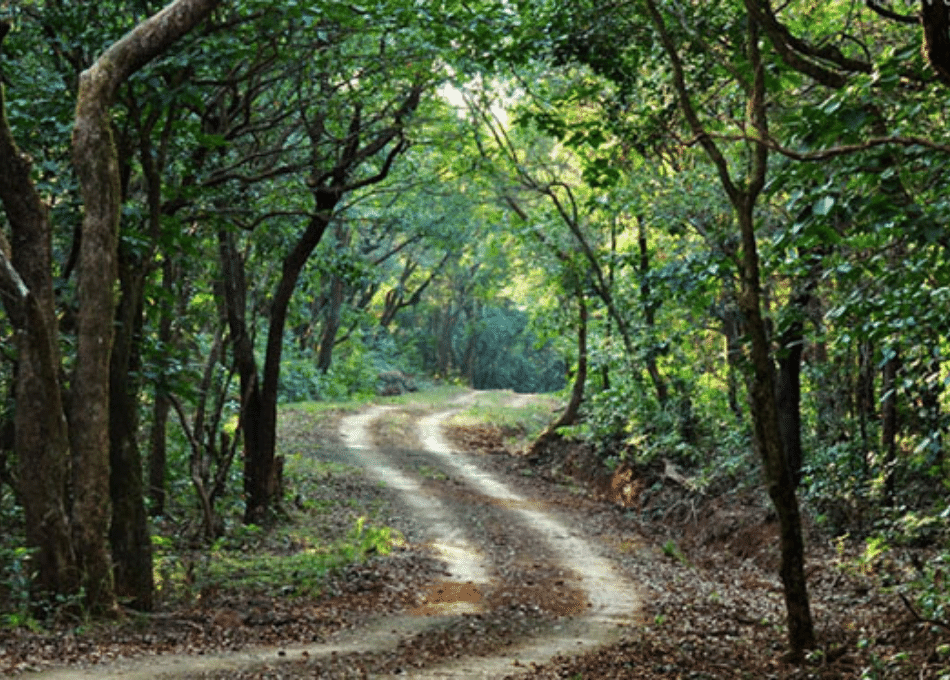


Koyna Wildlife Sanctuary
Koyna Wildlife Sanctuary is located in the Satara district of Maharashtra, India. Here are key details about Koyna Wildlife Sanctuary:
Location:
Koyna Wildlife Sanctuary is situated in the Western Ghats of Maharashtra, covering parts of the Satara, Sangli, and Ratnagiri districts. It is a significant protected area within the larger Western Ghats, a UNESCO World Heritage Site.
Establishment:
The sanctuary was established in 1985 to protect the diverse flora and fauna of the region. It is part of the Koyna Dam catchment area, which is an important water reservoir.
Flora:
The sanctuary is characterized by a variety of vegetation types, including evergreen forests, semi-evergreen forests, and deciduous forests. The flora includes valuable tree species like teak, shisham, and ain, along with a diverse understorey of shrubs and herbs.
Fauna:
Koyna Wildlife Sanctuary is home to a variety of wildlife, including Indian bison (gaur), Indian elephants, Indian leopards, sloth bears, sambar deer, barking deer, wild boars, and numerous species of birds and reptiles.
Koyna Dam:
The sanctuary is closely associated with the Koyna Dam, which is one of the largest dams in Maharashtra. The dam is built on the Koyna River and serves as a crucial water reservoir for the region.
Shivasagar Lake:
Shivasagar Lake is an artificial lake formed due to the Koyna Dam. It adds to the scenic beauty of the sanctuary and is an important water body for the local wildlife.
Birdlife:
The sanctuary is known for its avian diversity. Birdwatchers can spot a variety of species, including hornbills, woodpeckers, eagles, and other forest-dwelling birds.
Trekking and Eco-tourism:
Koyna Wildlife Sanctuary offers opportunities for eco-tourism and trekking. Visitors can explore the natural beauty of the Western Ghats, enjoy the biodiversity, and witness the breathtaking landscapes.
Research and Conservation:
The sanctuary serves as a site for research activities related to biodiversity and conservation. The presence of a variety of ecosystems makes it an interesting area for scientists and researchers studying the Western Ghats.
Conservation Challenges:
Like many wildlife sanctuaries, Koyna faces challenges such as habitat fragmentation, human-wildlife conflict, and the impact of development projects. Conservation efforts aim to address these challenges and ensure the long-term sustainability of the sanctuary.
Koyna Wildlife Sanctuary, with its diverse ecosystems and the presence of the Koyna Dam, is an important area for both biodiversity conservation and water resource management in the region. Responsible tourism and conservation initiatives play a crucial role in maintaining the ecological balance of this sanctuary.
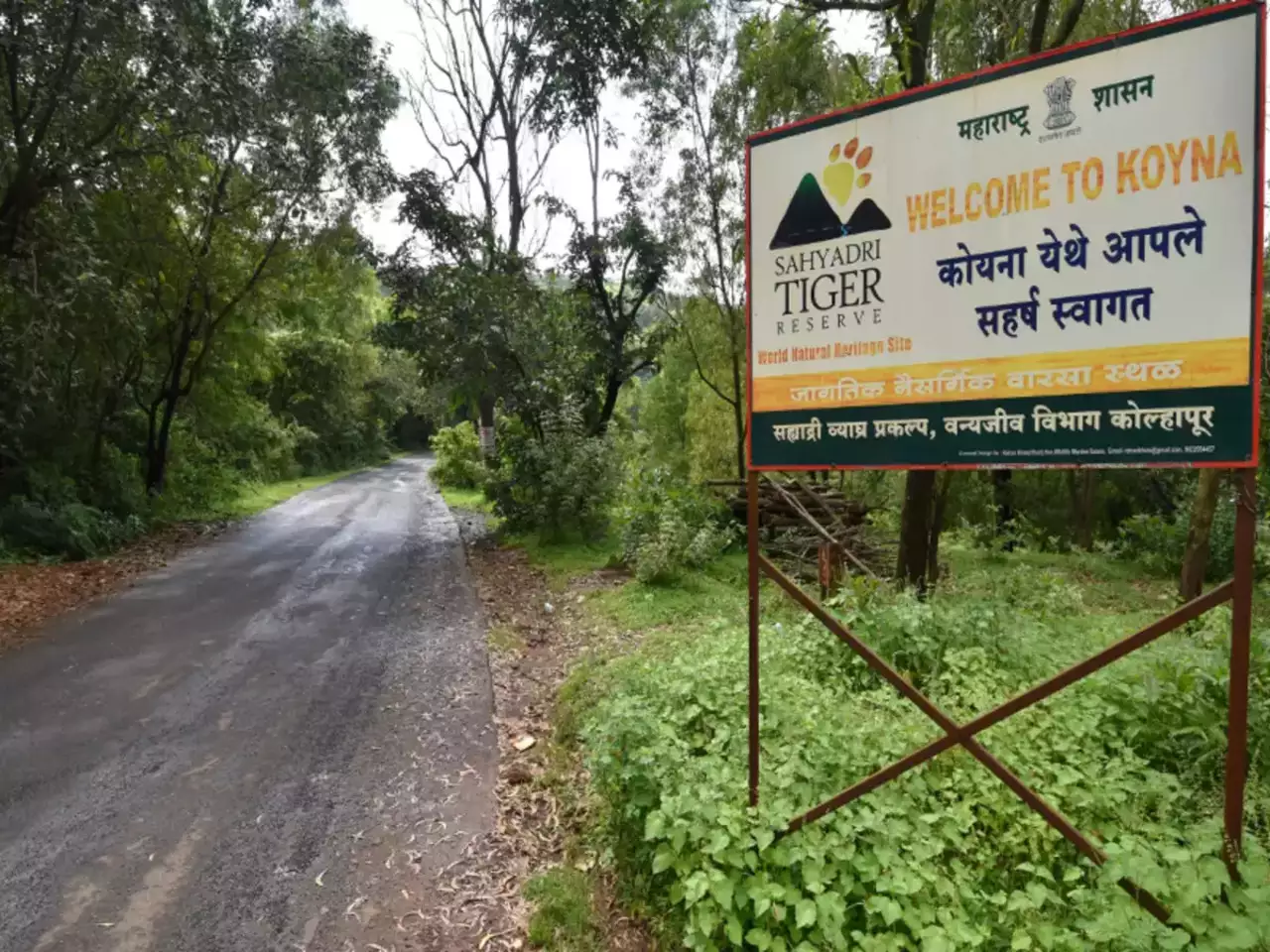

Nagzira Wildlife Sanctuary
Nagzira Wildlife Sanctuary is a protected area located in the northeastern part of Maharashtra, India. Here are key details about Nagzira Wildlife Sanctuary:
Location:
Nagzira Wildlife Sanctuary is situated in the Bhandara district of Maharashtra. It is part of the central Indian landscape and serves as a vital wildlife habitat in the region.
Establishment:
The sanctuary was established in 1970 with the primary objective of conserving the unique biodiversity of the area. It covers an area of approximately 152.81 square kilometers.
Flora:
The sanctuary is characterized by a mix of tropical moist deciduous and dry deciduous forests. Common tree species include teak, bamboo, ain, and mahua. The varied vegetation provides a suitable habitat for a diverse range of wildlife.
Fauna:
Nagzira Wildlife Sanctuary is known for its rich fauna. Some of the prominent wildlife species found in the sanctuary include Bengal tigers, Indian leopards, Indian bison (gaur), sloth bears, sambar deer, spotted deer, barking deer, wild boars, and a variety of smaller mammals and reptiles.
Birdlife:
The sanctuary is a paradise for birdwatchers, with over 166 species of birds recorded. Commonly spotted birds include hornbills, peafowl, jungle fowl, and various species of eagles, vultures, and waterbirds.
Nagzira Lake:
The sanctuary is home to Nagzira Lake, a picturesque water body that adds to the scenic beauty of the landscape. The lake is an important water source for the resident wildlife.
Conservation Initiatives:
Conservation efforts in Nagzira Wildlife Sanctuary focus on habitat preservation, anti-poaching measures, and community engagement. The sanctuary plays a crucial role in maintaining the ecological balance of the region.
Tourism:
Nagzira Wildlife Sanctuary is open to tourists and offers safari experiences, allowing visitors to explore the diverse ecosystems and wildlife of the area. Eco-tourism activities contribute to awareness and generate revenue for conservation efforts.
Connectivity:
Nagzira Wildlife Sanctuary is part of the larger central Indian landscape, contributing to the connectivity and conservation of biodiversity in the region.
Research and Education:
The sanctuary provides opportunities for research and education in the field of wildlife biology and conservation. Researchers and students often study the flora and fauna to better understand and protect the natural resources.
Nagzira Wildlife Sanctuary is valued for its biodiversity, scenic landscapes, and the opportunity it provides for both wildlife enthusiasts and researchers to experience and study the unique ecosystems of central India. Conservation efforts are vital to ensuring the long-term survival of the diverse species that inhabit the sanctuary.
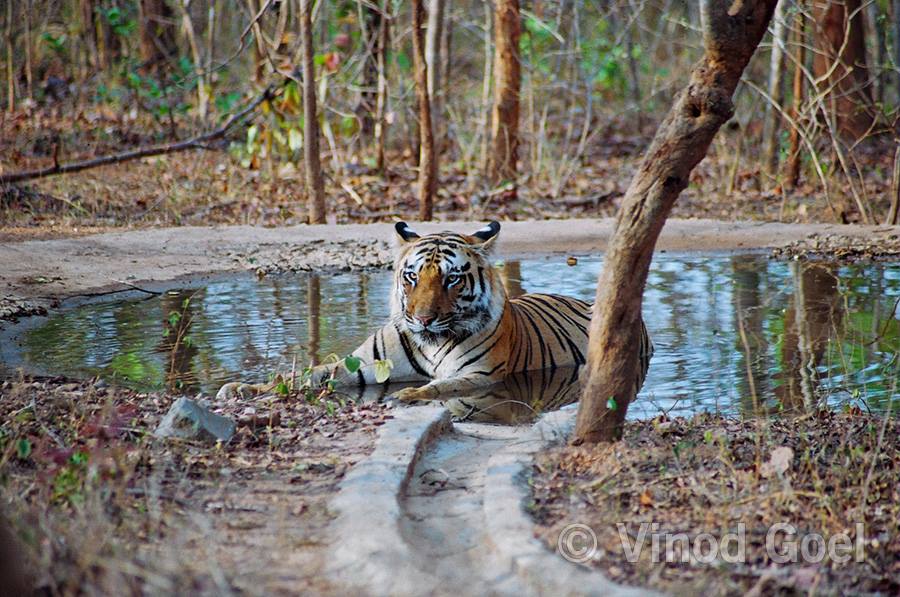
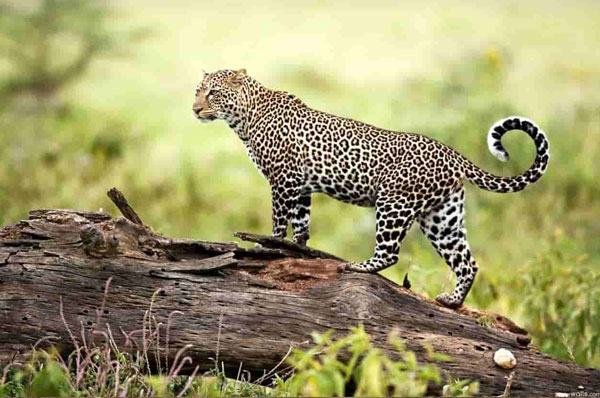
Sanjay Gandhi National Park
Sanjay Gandhi National Park, located in the northern part of Mumbai, Maharashtra, is one of the most visited national parks in the world that is situated within city limits. Here are key details about Sanjay Gandhi National Park:
Location:
Sanjay Gandhi National Park, formerly known as Borivali National Park, is located in the northern suburbs of Mumbai. It covers an area of approximately 104 square kilometers.
Establishment:
The park was established in 1969 with the aim of preserving the biodiversity and providing a natural habitat for various flora and fauna in the midst of a bustling metropolitan area.
Flora:
The park is home to a diverse range of vegetation, including moist deciduous forest, dry deciduous forest, and semi-evergreen forest. It houses over 1,300 plant species, including a variety of medicinal plants and herbs.
Fauna:
Sanjay Gandhi National Park is home to a significant wildlife population. Some of the notable species include spotted deer, sambar deer, Indian mongoose, leopards, macaques, langurs, and a variety of butterflies and insects.
Kanheri Caves:
The park is famous for the Kanheri Caves, a group of rock-cut caves that were carved out by Buddhist monks between the 1st and 9th centuries. The caves contain sculptures, inscriptions, and water cisterns.
Tigers and Leopards:
The park is known for having a population of leopards, and occasional sightings of these big cats have been reported. There have also been historical records of tigers in the park.
Lakes and Rivers:
The park has two lakes, Vihar Lake and Tulsi Lake, which are sources of drinking water for Mumbai. Additionally, the Mithi River flows through the park.
Birdlife:
Sanjay Gandhi National Park is a haven for birdwatchers, with over 270 species of birds recorded. Commonly seen birds include peafowl, kingfishers, sunbirds, and many species of waterbirds.
Tourism:
The park is a popular destination for both locals and tourists. It offers various attractions, including nature trails, wildlife safaris, and educational programs. The Kanheri Caves are a major cultural and historical attraction within the park.
Conservation and Challenges:
The park faces challenges related to encroachment, pollution, and human-wildlife conflict due to its proximity to a densely populated urban area. Conservation efforts aim to address these challenges while promoting the sustainable coexistence of wildlife and humans.
Sanjay Gandhi National Park plays a crucial role in providing a green lung for the city of Mumbai, offering residents and visitors a chance to connect with nature, explore biodiversity, and learn about the region’s cultural and historical heritage.
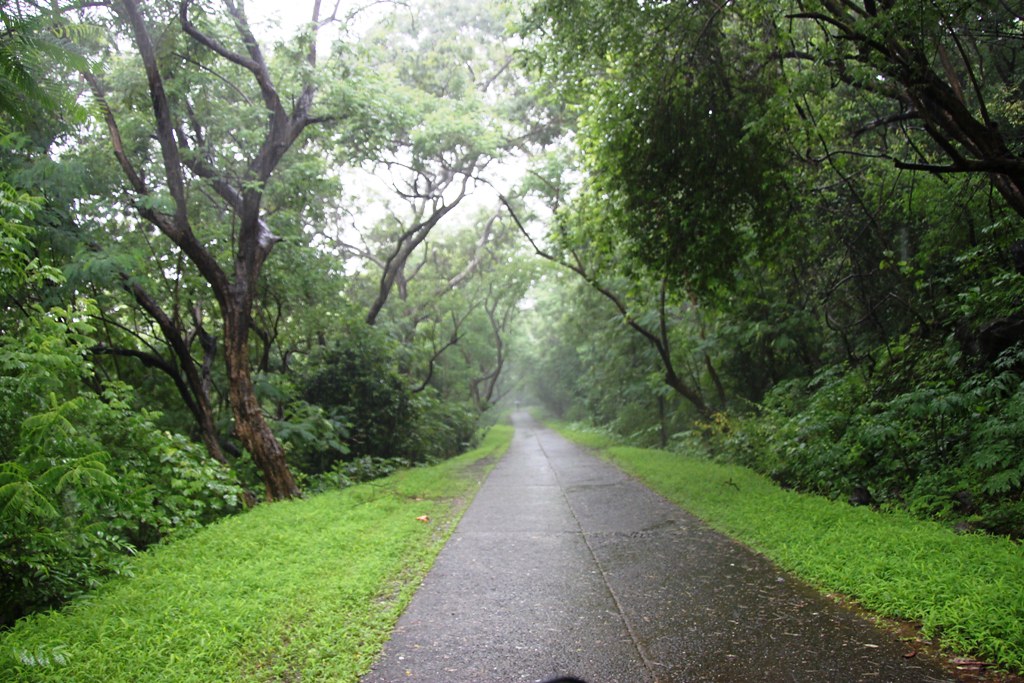

Chandoli National Park
Chandoli National Park is a protected area located in the Sahyadri Range of the Western Ghats in the state of Maharashtra, India. Here are key details about Chandoli National Park:
Location:
Chandoli National Park is situated in the Sangli district of Maharashtra. It lies in the western part of the state, near the Karnataka border.
Establishment:
The national park was established in 2004 to protect the biodiversity of the Western Ghats region. It covers an area of about 317 square kilometers.
Flora:
The park is characterized by diverse vegetation, including tropical and subtropical evergreen forests, semi-evergreen forests, and deciduous forests. It is home to a variety of tree species, including teak, bamboo, and various medicinal plants.
Fauna:
Chandoli National Park is rich in wildlife. Some of the notable species found in the park include Bengal tigers, Indian leopards, Indian bison (gaur), sambar deer, barking deer, Indian giant squirrels, and various species of primates.
Birdlife:
The park is a paradise for birdwatchers, with over 123 species of birds recorded. Commonly spotted birds include hornbills, paradise flycatchers, crested serpent eagles, and several species of woodpeckers.
Chandoli Dam:
The national park is adjacent to the Chandoli Dam, which is built on the river Bhogawati. The dam and its reservoir add to the scenic beauty of the area and provide water for the local wildlife.
Vairatgad Fort:
The park also features the historic Vairatgad Fort, which adds a cultural and historical dimension to the natural beauty of the region.
Conservation Efforts:
Conservation efforts in Chandoli National Park focus on protecting the biodiversity of the Western Ghats, including the endangered species that inhabit the area. Anti-poaching measures and habitat preservation are key components of these efforts.
Eco-tourism:
The national park offers opportunities for eco-tourism, including trekking, nature trails, and wildlife safaris. Visitors can explore the diverse ecosystems and enjoy the natural beauty of the Western Ghats.
Connectivity:
Chandoli National Park is part of the Sahyadri Tiger Reserve, contributing to the conservation of the tiger population in the Western Ghats region.
Chandoli National Park is recognized for its biodiversity, scenic landscapes, and cultural heritage. Conservation initiatives and responsible tourism play a crucial role in maintaining the ecological balance and promoting sustainable practices in this Western Ghats ecosystem.
